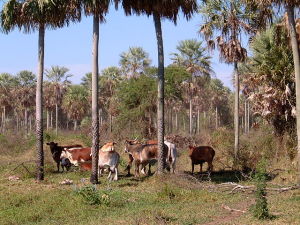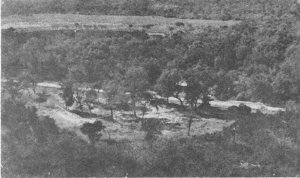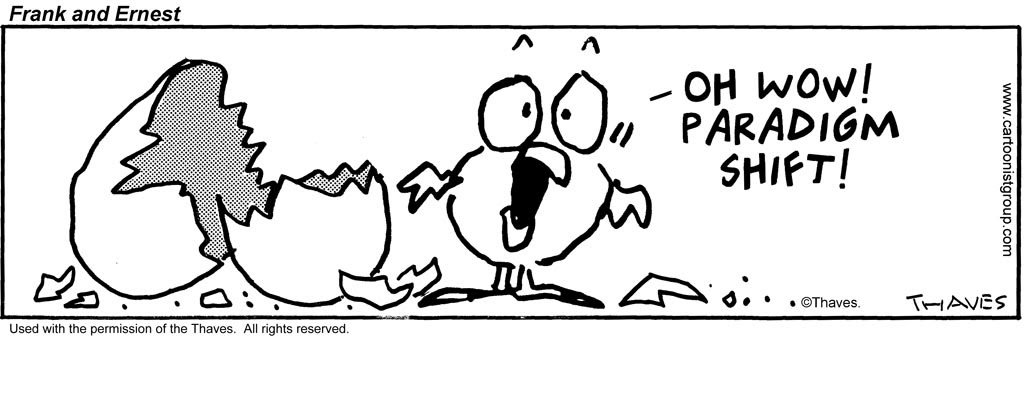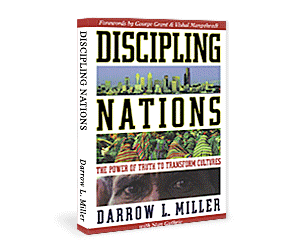In our previous post we pointed out that community existed before the creation in the three-in-one God. Here we will pursue a further dimension of that truth as it was lived out in the Mennonite communities of the Gran Chaco.
The God of community made humans to live in community, and then gave a mandate to that human community, a mandate to create commerce:
26 Then God said, “Let us make mankind in our image, in our likeness, so that they may rule over the fish in the sea and the birds in the sky, over the livestock and all the wild animals,[a] and over all the creatures that move along the ground.”
27 So God created mankind in his own image,
in the image of God he created them;
male and female he created them.
28 God blessed them and said to them, “Be fruitful and increase in number; fill the earth and subdue it. Rule over the fish in the sea and the birds in the sky and over every living creature that moves on the ground.”
This commission is known as The Cultural Mandate or The Creation Mandate, and it includes two subordinating clauses: one social and one developmental.
The social dimension in turn has two distinct parts. The first is demographic: we are to be fruitful, to create families and communities of families. The second part is geographic: we are to fill the earth. We are not to stay in one place. The horizons are wide, human beings are to spread to the ends of the earth where there is further potential to flourish.
The second subordinating clause of the Cultural Commission is to “have dominion” over creation, to take what God has made and do something with it. We are to develop the earth and create godly culture.
All that leads to this observation: the community of human beings were made to engage in commerce. That term comes from the Latin commercium comprised of com, “together” and merx, the genitive form of mercis, merchandise.
1 Kings 8:63 reveals that the people of God carried on commerce at the public market, chiefly the open spaces near the gates, where goods were brought for sale by those who came from the outside the city.
King Solomon extended commerce through shipping (2 Chronicles 9:21). The king’s ships went to Tarshish with the servants of Huram. Every three years these ships returned bringing gold, silver, ivory, apes, and peacocks.
Commerce in Israel was governed by law; it was to be carried on in justice. “You shall have just balances, just weights, a just ephah, and a just hin: I am the LORD your God, who brought you out of the land of Egypt,” (Lev 19:36 ESV).
Webster’s 1828 dictionary shows the comprehensive nature of commerce: “1) … an interchange or mutual change of goods, wares, productions, or property of any kind, between nations or individuals … 2) … mutual dealings in common life. 3) … a vast commerce of ideas.” (emphasis added)

Commerce depends on connections between families and communities. Which brings me to this historical observation about the Mennonites in the Gran Chaco: when these immigrants arrived, there were no roads.
After 20 years, the Mennonites had built a sense of community within their colonies, but each settlement was isolated from the others and from the rest of Paraguay. Without roads, a trip to Asunción, the capital city, took from five days to several weeks. The journey was by oxcart on pathways, connecting to a freight rail line and finally via unpredictable river boat. This extended travel resulted in pillage and spoilage, often erasing all profits from their labors.
By this time the colonies were no longer starving but still poor. The people worked hard. Their work was productive with what they had, but they lacked the dynamic of commerce. Besides this economic impact of their profound isolation, the limited human contact with the rest of the world was demoralizing.
The Paraguayan government had promised the pioneers it would build roads and extend the rail line to the colonies. These promises were left unfulfilled. Development of the colonies was stifled. But the government’s lack of engagement created a challenge, not an insurmountable barrier, for the colonies. They did it themselves!

The Mennonites knew they needed to connect to the larger world for the development of commerce, both economic commerce (goods and services) as well as the commerce of ideas. So they began to construct roads. They created voluntary associations and linked with Mennonite communities in Canada and the United States to build needed roads. Mennonite author and historian Edgar Stoesz writes, “When the kilometers of roads built and maintained by Mennonite colonies in Paraguay are laid end to end, they reach from New York to Vancouver.”
These roads allowed the colonies to move from isolated subsistence agricultural economies to a vibrant commercial economy connected to Paraguay and the world. The Mennonites’ roads brought flourishing to “the Green Hell.” The God-given dream of the transformation of a wilderness into a place of abundance is being accomplished. Much of the reason has been the building of roads that opened the pathway of commerce.
- Darrow Miller
This post is fourth in a series on the transformation of the Gran Chaco in Paraguay.
Part 1 – A Wasteland Transformed to a Garden
Part 2 – The Church and Development in Paraguay’s “Green Hell”
Part 3 – Community: The Engine of Mennonite Economic Development
Related posts:





